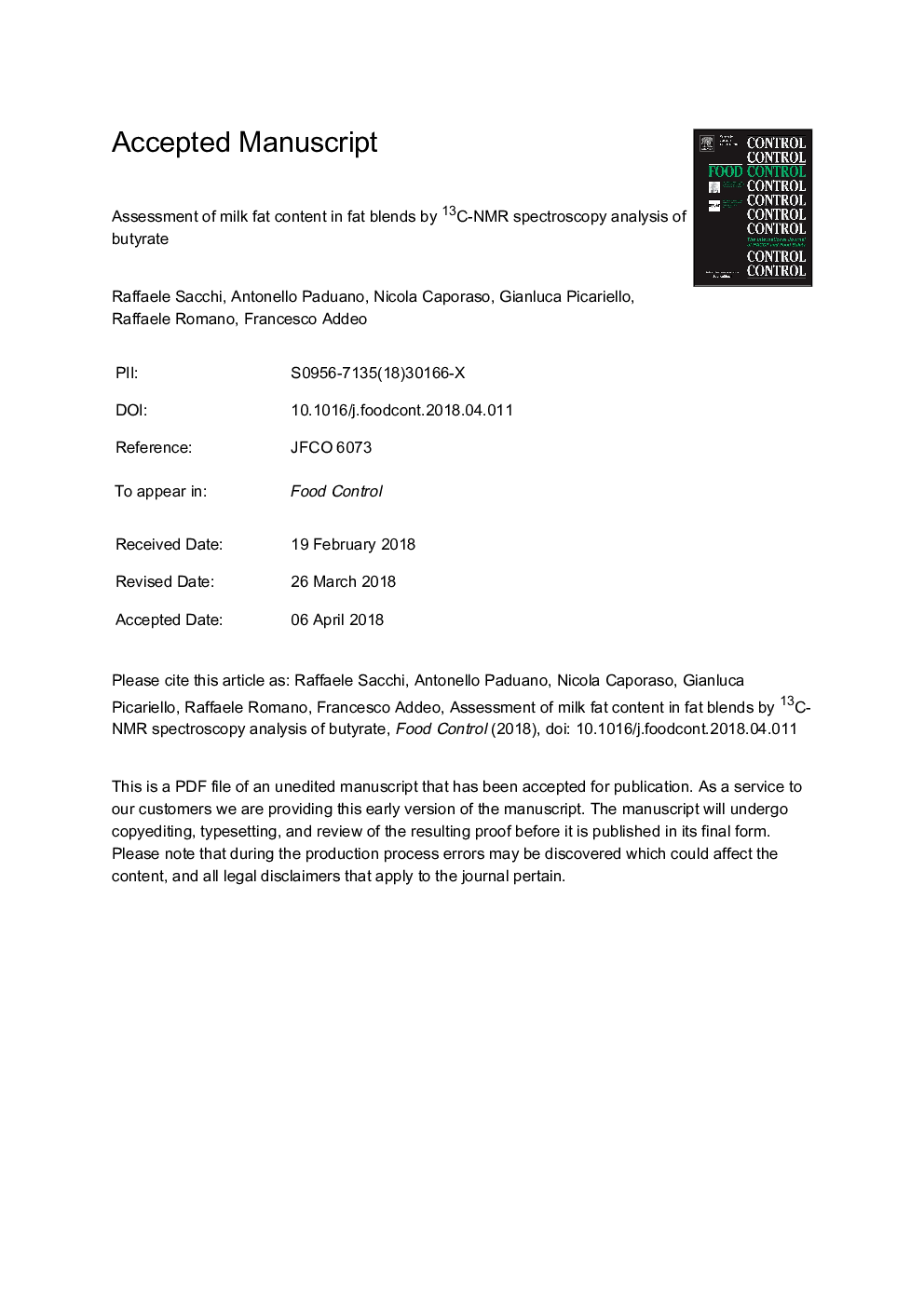| Article ID | Journal | Published Year | Pages | File Type |
|---|---|---|---|---|
| 8887901 | Food Control | 2018 | 23 Pages |
Abstract
Butyric acid (butyrate) is a candidate marker of milk fat in complex fat blends, since it is exclusive of milk triacylglycerols (TAGs) from different ruminant species. In this work, we determined the amount of milk fat used for the preparation of fat blends by 13C Nuclear Magnetic Resonance (13C NMR) spectroscopy-based quantification of butyrate. When tested on fat samples spiked with known amounts of reference bovine milk fat (BCR-519 certified material), the relative composition of the mixtures was reliably assessed through the integration of the diagnostic 13C NMR carbonyl (C1) or α-carbonyl methylene (C2) resonances of butyrate. NMR data exhibited strict correlation with high resolution-gas chromatography (GC) of fatty acid methyl esters (R2â¯=â¯0.99), which was used as an independent and well-established method for the determination of butyrate. Thus, 13C NMR can be used for the direct assessment of milk fat content in fat mixtures, at a limit of detection lower than 5%, with clear advantages over the traditional GC methods in terms of speed, robustness and minimal sample handling. The natural variability of butyrate in milk has been taken into account to estimate the uncertainty associated with the milk fat content in unknown fat blends.
Keywords
Related Topics
Life Sciences
Agricultural and Biological Sciences
Food Science
Authors
Raffaele Sacchi, Antonello Paduano, Nicola Caporaso, Gianluca Picariello, Raffaele Romano, Francesco Addeo,
